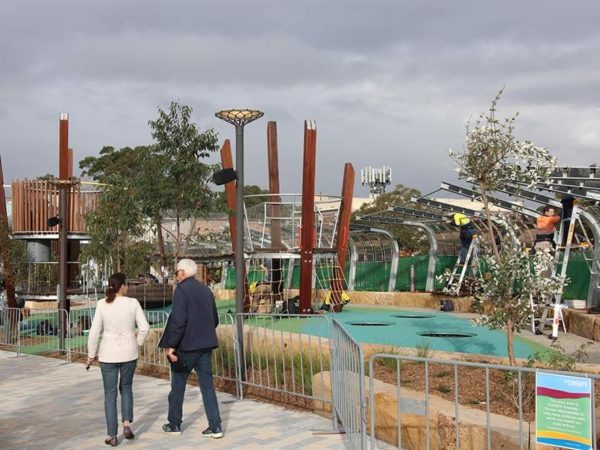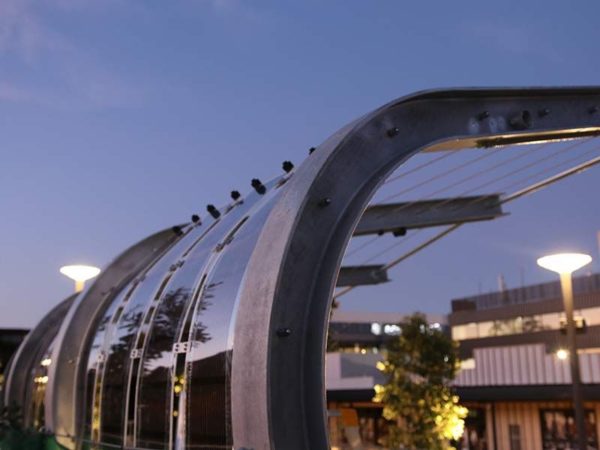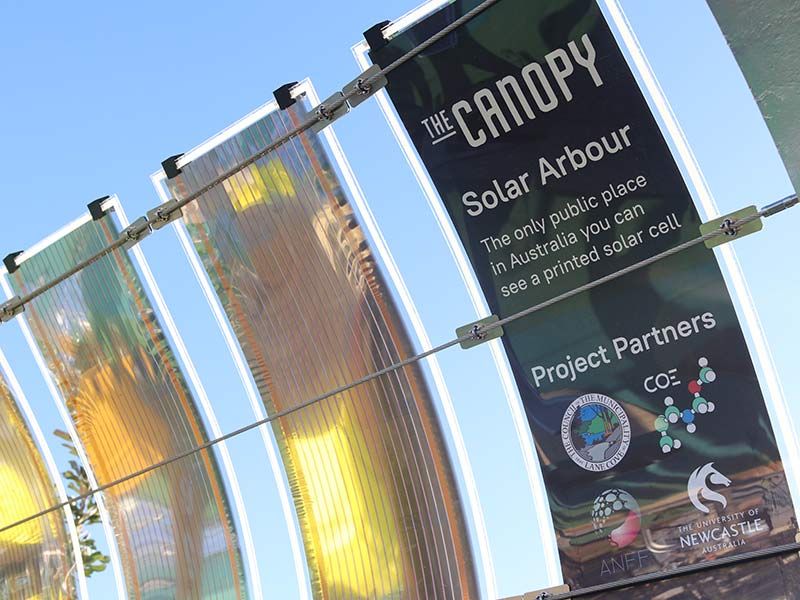Australia is on the verge of an entirely new clean manufacturing industry thanks to the development of an Aussie technology at the University of Newcastle and now in public display for the first time in the Sydney suburb of Lane Cove.
The technology is Printed Solar, and it has the potential to revolutionise the very passivity of our objective world, the potential to activate any surface, be it window, rooftop, or road, as a generator of cheap solar energy.
At the University of Newcastle’s Centre of Organic Electronics (COE), Prof. Paul Dastoor and his team developed the technology out of the “ability to take tiny particles of mixtures of different polymers and turn them into a suspension in water that we can coat over large areas of surfaces.”
Now that team is walking the walk by taking “science to the streets” in Printed Solar’s first public display in what is hoped to be a major milestone toward rapid commercial scaling.
“Globally, there’s been so few of these installations,” said Dastoor, “we know very little about how they perform in a public setting. This installation is the next critical step in accelerating the development and commercialisation of this technology. It presents a new scenario for us to test performance and durability against a range of new challenges.”
Located within Lane Cove Council’s ‘The Canopy’, the public display demonstrates Printed Solar’s ultra light-weight, ultra flexible, recyclable and cheap ability to fit itself into almost any urban environmental setting. The printed panels generate energy during the day, store it in a battery and then utilise it at night to power a lucent, interactive, and explicative display.

“We’ve installed sensors as part of the display so the lights will actually detect movement and follow people as they move along the arbour. The lights are programmable so we can set them to specific colours to celebrate awareness events or other significant moments,” said Dastoor.
Dastoor also called out the Australian Government, with particular reference to its Technology Investment Roadmap, to invest in sustainable and demonstrable technologies like Printed Solar, noting that there are research groups around the world developing sustainable technologies without emitting carbon.
A new and sustainable Australian manufacturing industry
For Dastoor and his team, the next step after this public demonstration is an advanced manufacturing facility in NSW whereby the team can scale up from printing hundreds of square metres of Printed Solar to thousands fo square metres.
“This technology will really disrupt and revitalise the contracting print industry,” said Dastoor, for the technology can be printed using conventional printers. Indeed, the solar is currently printed using a machine that normally prints wine labels, evidently, this is a printer which specialises in industries where light congregates.
The potential of this technology can hardly be overstated, indeed, at less than $10 per square metre, recyclable, rapidly produced, and just as rapidly deployed, the only thing stopping printed solar from exponential scaling is a willpower which is certainly not lacking in the technologists themselves.
After all, the applicability of printed solar is just as difficult to overstate, Dastoor sees few industries or locations worldwide that could not find easy benefit with printed solar, be it the coating of Australia’s rural roadsides, yacht sails, smart blinds, EVs, or the defence industry.

Dastoor hopes this first public demonstration will inspire youngsters interested in the STEM fields to recognise the clear future that exists for them if Australia rises to its solar responsibility. “Young people inspired by this demonstration could become our first, pivotal wave of high-tech workers helping to bring printed solar to fruition – that’s an incredibly exciting idea.”
Dastoor is in no way reaching for hyperbole, the public display really is a luminously vibrant display, even featuring a Tupac-style hologram of Dastoor himself for interested visitors to interact with one-on-one.
Printed solar panels are far less efficient and long-lasting as traditional solar panels, however, as stated earlier, such turnover of printed solar’s, due to its recyclability and cheapness, means there is little to worry about other than an extremely busy manufacturing industry and an ability to easily run out new and improved versions of printed solar.
This content is protected by copyright and may not be reused. If you want to cooperate with us and would like to reuse some of our content, please contact: editors@pv-magazine.com.









2 comments
By submitting this form you agree to pv magazine using your data for the purposes of publishing your comment.
Your personal data will only be disclosed or otherwise transmitted to third parties for the purposes of spam filtering or if this is necessary for technical maintenance of the website. Any other transfer to third parties will not take place unless this is justified on the basis of applicable data protection regulations or if pv magazine is legally obliged to do so.
You may revoke this consent at any time with effect for the future, in which case your personal data will be deleted immediately. Otherwise, your data will be deleted if pv magazine has processed your request or the purpose of data storage is fulfilled.
Further information on data privacy can be found in our Data Protection Policy.